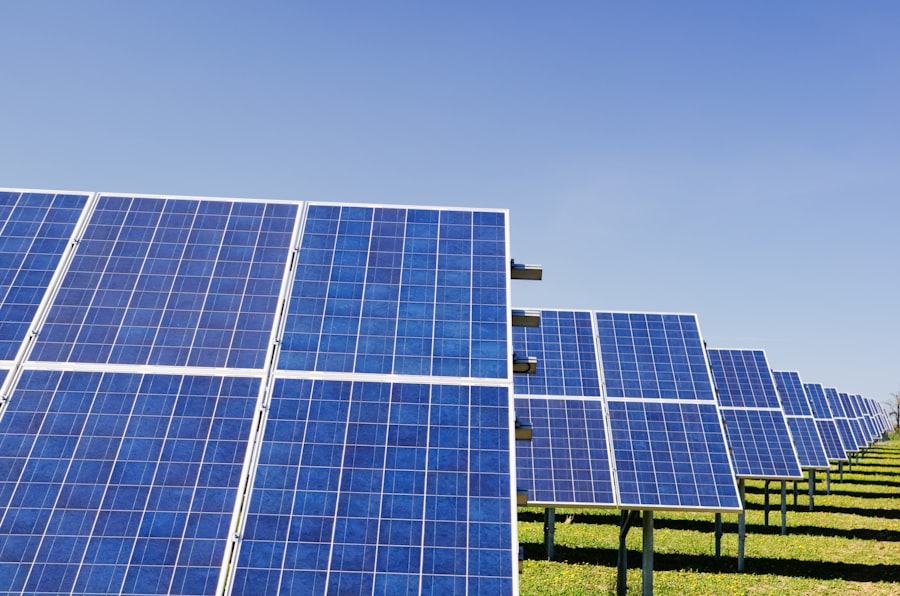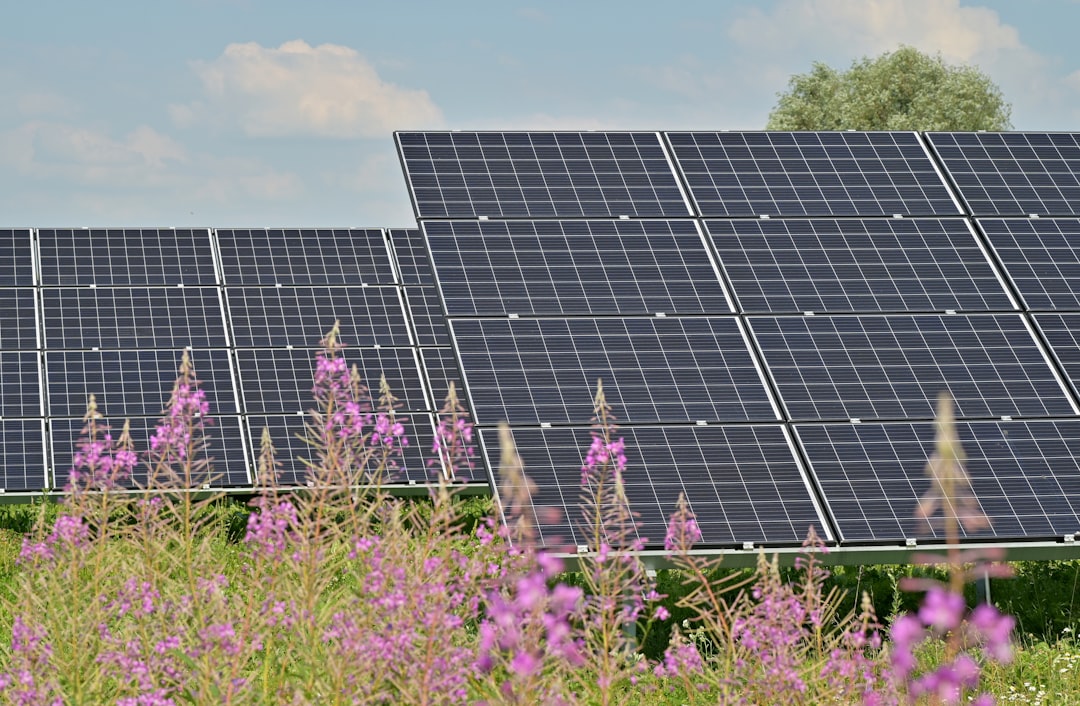Net-zero energy buildings (NZEBs) represent a transformative approach to sustainable architecture and urban planning. These structures are designed to produce as much energy as they consume over the course of a year, effectively balancing their energy use with renewable energy generation. The concept of net-zero energy is rooted in the urgent need to address climate change and reduce greenhouse gas emissions, particularly from the building sector, which accounts for a significant portion of global energy consumption.
By integrating energy efficiency measures with renewable energy technologies, NZEBs aim to minimize their environmental impact while providing comfortable and functional living and working spaces. The definition of net-zero energy can vary slightly depending on the context, but it generally encompasses two main strategies: energy efficiency and renewable energy generation. Energy efficiency involves optimizing the building’s design, materials, and systems to reduce overall energy demand.
This can include high-performance insulation, energy-efficient windows, and advanced heating, ventilation, and air conditioning (HVAC) systems. On the other hand, renewable energy generation typically involves the use of solar panels, wind turbines, or other technologies that harness natural resources to produce clean energy. The balance between these two components is crucial; a building that consumes less energy will require a smaller renewable energy system to achieve net-zero status.
Key Takeaways
- Net-zero energy buildings produce as much energy as they consume
- Key components include energy-efficient design, renewable energy sources, and energy storage
- Advantages include reduced energy costs, environmental benefits, and increased property value
- Challenges include high upfront costs, limited technology options, and lack of awareness
- Technologies and strategies include solar panels, energy-efficient HVAC systems, and smart building automation
Key Components of Net-Zero Energy Buildings
Passive Design Strategies
One of the most critical elements is passive design, which leverages natural resources such as sunlight, wind, and thermal mass to enhance comfort while minimizing energy use. For instance, strategically placed windows can maximize daylighting and reduce reliance on artificial lighting, while overhangs can provide shade during hot months, reducing cooling loads.
Active Systems and Renewable Energy Technologies
In addition to passive design strategies, active systems are essential for achieving net-zero energy status. These include renewable energy technologies such as photovoltaic (PV) solar panels, which convert sunlight into electricity, and solar thermal systems that harness solar energy for heating water.
Energy Storage and Smart Building Technologies
Energy storage solutions, such as batteries, are increasingly important as they allow buildings to store excess energy generated during peak production times for use during periods of low generation or high demand. Furthermore, smart building technologies that monitor and optimize energy use in real-time can significantly enhance the efficiency of NZEBs by adjusting systems based on occupancy and environmental conditions.
Advantages of Net-Zero Energy Buildings

The advantages of net-zero energy buildings extend beyond their environmental benefits; they also offer economic and social advantages that make them an attractive option for developers, homeowners, and communities alike. One of the most compelling benefits is the potential for significant cost savings on energy bills. By generating their own energy, NZEBs can drastically reduce or even eliminate utility costs over time.
This financial incentive is particularly appealing in regions with high electricity prices or where incentives for renewable energy installations are available. Moreover, NZEBs contribute to enhanced occupant comfort and health. The emphasis on high indoor air quality, natural lighting, and thermal comfort creates environments that promote well-being.
Studies have shown that occupants in energy-efficient buildings report higher satisfaction levels and improved productivity compared to those in conventional structures. Additionally, NZEBs can increase property values due to their lower operating costs and appeal to environmentally conscious buyers. As sustainability becomes a more significant factor in real estate decisions, properties designed with net-zero principles are likely to attract premium prices in the market.
Challenges in Achieving Net-Zero Energy Buildings
| Challenges | Description |
|---|---|
| High Initial Costs | Investment required for energy-efficient technologies and materials. |
| Technological Limitations | Lack of advanced technologies for achieving net-zero energy. |
| Behavioral Changes | Need for occupants to adopt energy-saving habits and practices. |
| Regulatory Barriers | Challenges in complying with building codes and regulations. |
| Energy Storage | Difficulty in storing excess energy for later use. |
Despite the numerous advantages associated with net-zero energy buildings, several challenges hinder their widespread adoption. One of the primary obstacles is the initial capital investment required for construction or retrofitting. While NZEBs can lead to long-term savings on energy costs, the upfront expenses for high-performance materials, advanced technologies, and renewable energy systems can be daunting for many developers and homeowners.
This financial barrier is often exacerbated by a lack of access to financing options tailored specifically for sustainable building projects. Another significant challenge lies in the complexity of designing and constructing NZEBs. Achieving net-zero status requires a multidisciplinary approach that integrates architecture, engineering, and environmental science.
This complexity can lead to coordination issues among various stakeholders involved in the project, including architects, contractors, and engineers. Additionally, there may be a lack of skilled labor familiar with the latest technologies and best practices for NZEB construction. As a result, projects may face delays or cost overruns due to unforeseen complications during the design or construction phases.
Technologies and Strategies for Advancing Net-Zero Energy Buildings
To overcome the challenges associated with net-zero energy buildings, various technologies and strategies have emerged that facilitate their development and implementation. One promising approach is the use of Building Information Modeling (BIM), which allows architects and engineers to create detailed digital representations of buildings before construction begins. BIM enables better collaboration among project stakeholders and helps identify potential issues early in the design process, ultimately leading to more efficient construction practices.
In addition to BIM, advancements in renewable energy technologies are making it easier for buildings to achieve net-zero status. For example, solar panel efficiency has improved significantly over the past decade, allowing for greater energy generation from smaller surface areas. Innovations in battery storage technology have also made it possible for buildings to store excess energy generated during sunny days for use during nighttime or cloudy periods.
Furthermore, emerging technologies such as geothermal heating and cooling systems provide efficient alternatives to traditional HVAC systems by utilizing stable underground temperatures.
Policies and Incentives for Promoting Net-Zero Energy Buildings

Government policies and incentives play a crucial role in promoting the adoption of net-zero energy buildings. Many countries have established building codes and standards that encourage or require higher levels of energy efficiency in new construction projects. For instance, some jurisdictions have implemented mandatory net-zero targets for all new public buildings by specific deadlines.
These regulations not only drive innovation in building design but also create a level playing field for developers committed to sustainability. In addition to regulatory measures, financial incentives such as tax credits, grants, and rebates can significantly lower the barriers to entry for NZEB projects. Programs that provide funding for renewable energy installations or energy-efficient upgrades can make it more feasible for homeowners and businesses to invest in sustainable building practices.
Moreover, utility companies often offer incentives for customers who implement energy-saving measures or generate their own renewable energy. These policies not only support individual projects but also contribute to broader efforts aimed at reducing carbon emissions on a national scale.
Case Studies of Successful Net-Zero Energy Buildings
Numerous case studies illustrate the successful implementation of net-zero energy building principles across various contexts. One notable example is the Bullitt Center in Seattle, Washington, often referred to as the “greenest commercial building in the world.” Completed in 2013, this six-story office building features an array of solar panels that generate more electricity than the building consumes annually. The Bullitt Center incorporates advanced water conservation systems and uses locally sourced materials, showcasing how innovative design can lead to both environmental sustainability and economic viability.
Another exemplary project is the Zero Energy House in New York City, designed by architect David Baker + Partners. This residential building utilizes a combination of passive design strategies—such as high-performance insulation and triple-glazed windows—and active systems like rooftop solar panels to achieve net-zero status. The project not only demonstrates how urban infill can be developed sustainably but also highlights the importance of community engagement in creating spaces that meet both environmental goals and residents’ needs.
Future Outlook for Net-Zero Energy Buildings
The future outlook for net-zero energy buildings appears promising as awareness of climate change continues to grow alongside technological advancements in sustainable construction practices. As more governments commit to ambitious climate targets and carbon neutrality goals, the demand for NZEBs is likely to increase significantly. This shift will drive innovation in building materials and technologies while fostering collaboration among architects, engineers, policymakers, and communities.
Moreover, as public interest in sustainability rises, educational initiatives aimed at promoting awareness about net-zero principles will become increasingly important. By equipping future generations with knowledge about sustainable design practices and renewable technologies, society can cultivate a workforce capable of addressing the challenges associated with climate change effectively. As we move forward into an era where sustainability is paramount, net-zero energy buildings will undoubtedly play a pivotal role in shaping resilient communities that prioritize environmental stewardship while enhancing quality of life for all inhabitants.
FAQs
What is a Net-Zero Energy Building?
A Net-Zero Energy Building is a structure that produces as much energy as it consumes on an annual basis. This is typically achieved through a combination of energy-efficient design, on-site renewable energy generation, and energy storage.
How do Net-Zero Energy Buildings differ from traditional buildings?
Net-Zero Energy Buildings differ from traditional buildings in that they are designed and constructed to minimize energy consumption and to generate their own energy on-site. This often involves the use of advanced building materials, energy-efficient appliances, and renewable energy technologies such as solar panels or wind turbines.
What are the benefits of Net-Zero Energy Buildings?
The benefits of Net-Zero Energy Buildings include reduced energy costs, lower environmental impact, increased energy independence, and improved indoor air quality. These buildings also contribute to the overall reduction of greenhouse gas emissions and help mitigate climate change.
What are some common strategies used to achieve net-zero energy in buildings?
Common strategies used to achieve net-zero energy in buildings include passive design techniques to maximize natural lighting and ventilation, high levels of insulation, energy-efficient heating and cooling systems, and the integration of renewable energy sources such as solar panels or geothermal heat pumps.
Are Net-Zero Energy Buildings cost-effective?
While the initial construction costs of Net-Zero Energy Buildings may be higher than those of traditional buildings, the long-term operational savings from reduced energy bills often make them cost-effective over the building’s lifespan. Additionally, government incentives and rebates for energy-efficient and renewable energy technologies can help offset the upfront costs.


